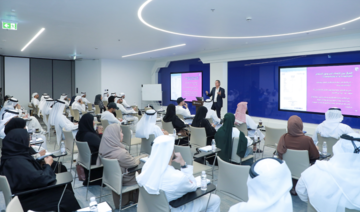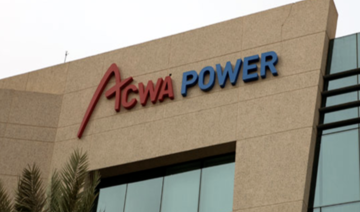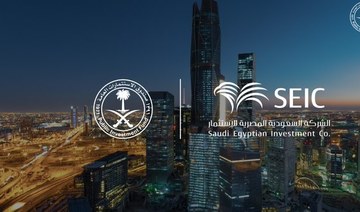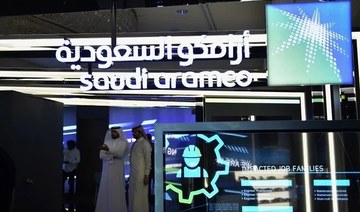HOUSTON: Two decades ago, BP set out to transcend oil, adopting a sunburst logo to convey its plans to pour $8 billion over a decade into renewable technologies, even promising to power its gas stations with the sun.
That transformation — marketed as “Beyond Petroleum” — led to manufacturing solar panels in Australia and Spain and erecting wind farms in the US and the Netherlands.
Today, BP might be more aptly branded “Back to Petroleum” after exiting or scaling back its renewable energy investments. Lower-cost Chinese components upended its solar panel business, which the firm shed in 2011. A year later, BP tried to sell its US wind power business but could not get a buyer.
“We made very big bets in the past,” BP CEO Bob Dudley told Reuters in an interview. “A lot of those didn’t work. We’re not sure yet what will be commercially acceptable.”
The costly lesson of the biggest foray yet by an oil major into renewable energy was not lost on rival firms.
Even as governments and environmentalists forecast a peak in oil demand within a generation — and China and India say they may eventually ban gasoline and diesel vehicles — leaders of the world’s biggest oil firms are not buying the argument that their traditional business faces any imminent threat.
A Reuters analysis of clean energy investments and forecasts by oil majors, along with exclusive interviews with top oil executives, reveal mostly token investments in alternative energy. Today, renewable power projects get about 3 percent of $100 billion in combined annual spending by the five biggest oil firms, according to energy consultancy Wood Mackenzie.
BP, Chevron, Exxon Mobil, Royal Dutch Shell and Total are instead milking their drilling and processing assets to finance investor payouts now and bolster balance sheets for the future. They believe they can enter new energy sectors later by acquiring companies or technologies if and when others prove them profitable.
“There is no sign of peak demand right now,” said Chevron CEO John Watson, an economist by training, who is retiring in early 2018. “For the next 10 or 20 years, we expect to see oil demand growth.”
The International Energy Agency forecasts a 10 percent rise in oil demand through 2040, reflecting the consensus among oil firms. The earliest estimate for peak oil demand from any oil company is late next decade, by Shell CEO Ben van Beurden.
History shows energy transitions — from wood to coal to oil — take a long time. Coal’s contribution to world energy consumption peaked recently at 28 percent and remains above the share from natural gas, though just below oil’s one-third.
Profit, if any, from the majors’ decades-long interest in renewable energy ventures is unclear. None of the largest oil companies disclose earnings from their solar, wind or biofuels ventures.
Investors such as Alasdair McKinnon, portfolio manager at Scottish Investment Trust, believe oil will sustain shareholders far into the future.
“There isn’t a viable alternative to fossil fuels on the horizon,” he said. “We’re not buying into the long-term demand destruction for oil.”
The confidence in oil’s future relies largely on rising consumption from emerging economies. Exxon forecasts that transportation will require 25 percent more fuel by 2040, propelled by growth in Asia. Chevron’s analysis of the India and Nigeria markets, meanwhile, concludes that infrastructure needed for electric cars is unlikely to be built.
Cars account for about a fifth of oil consumption, BP estimates. So if electric vehicles do eventually capture mass markets, oil firms would still expect growing demand from the air, rail and trucking industries.
Natural gas — now a smaller business than oil for most majors — can grow to nearly a quarter of all energy used by displacing coal in power generation and through expanded uses in chemicals, these companies forecast. Natural gas can also fuel the power needed for electric cars.
Although Shell forecasts peak oil demand coming earlier than its rivals, it is preparing for that prospect mostly with massive natural gas investments. The firm last year spent $54 billion acquiring BG Group, which derives half its production from gas. Chevron, Exxon and Shell recently have spent billions of dollars on new liquefied natural gas projects across the globe.
Exxon declined to comment for this article.
Critics of oil majors’ cautious renewable strategy — including some big investors — say the firms are being short-sighted in their trust that change will come slow, or that one fossil fuel will gradually replace another. Just as cheap natural gas is supplanting coal, even cheaper wind or solar eventually will displace gas, they argue.
South Australia is soon to become a proving ground for a project that could pave the way for renewable power to supplant fossil fuels for peak electricity — a combined wind farm and grid-scale battery storage facility, by electric-car maker Tesla and operator Windlab.
Fossil fuel companies need to quickly reorient themselves to the low returns of the solar and wind industries, said Jules Kortenhorst, a former Shell executive who runs the Rocky Mountain Institute, a nonprofit energy research organization.
“You cannot flip a switch on a Monday morning from being one to another,” he said. “Paychecks in the oil and gas industry are based on fundamentally believing that the world cannot see economic growth without fossil fuels.”
To achieve the same share of the renewables market that the largest publicly traded oil companies now hold in oil and gas would require an investment of about $350 billion over the next 18 years, estimates consultancy Wood Mackenzie. Such spending would cut into the generous dividends that oil firms’ shareholders have come to expect.
“We think it will be a real challenge for these companies to change their business model,” said Nathan Fabian, director of policy at Principles for Responsible Investment (PRI), a UN backed group.
PRI has guidelines calling for investment analysis that weighs environmental, social and governance issues. Its principles have been adopted by investors with $70 trillion in assets under management.
Oil companies have made relatively modest investments a wide range of renewable technologies. Chevron has a smattering of mostly small wind and solar ventures; Shell invests in sugar-cane ethanol in South America, wind farms in the US and electric-car charging stations in Europe; and BP still owns the US wind farms it once tried to sell.
John Browne — who as BP’s CEO two decades ago helped launch the early investments in renewables — said he still believes the renewable power will grow.
“It will take time,” he said in an interview with Reuters last month. “And they have time.”
Shell pledged to invest up to $1 billion a year by 2020 in what it calls “new energies.”
Total said this year it would spend $500 million annually on developing alternatives. But soon after that announcement, it unveiled its $7.5 billion acquisition of Maersk Oil, part of a plan to pump more crude from Norway’s North Sea.
Total CEO Patrick Pouyanne explained the focus on economics at an October oil conference in London.
“When you ask our customers what their priority is, either in developed economies or in emerging countries, price comes first,” he said. A hasty shift to renewables, he said, “could bring great economic and social damage to our 6 billion customers.”
Exxon Mobil is backing research into biofuels, joining with gene modification firm Synthetic Genomics to coax algae to produce more lipids, an oil substitute. It hasn’t detailed its investment but said the effort remains far from commercialization. By comparison, Exxon this year spent $5.6 billion on US shale oil assets.
Some of the oil industry’s largest customers are planning a shift to renewable alternatives, especially in transportation, which accounts for about a quarter of annual energy consumption.
Ford earlier this fall disclosed it would aim, by 2030, to derive a third of its sales from battery-powered cars and another third from gas-electric hybrids.
A startup backed by Boeing and JetBlue Airways recently announced plans for a small hybrid jet by 2022, using batteries from Tesla and battery supplier Panasonic.
Yet oil firms continue to forecast aggressive growth in liquid fuels. Exxon predicts 90 percent of the transportation industry will rely on petroleum through 2040.
BP projects the world’s auto fleet doubling to 1.8 billion vehicles by 2035, with only 75 million of those powered by electricity.
“We’ll see if (electric cars) can be delivered in a way that doesn’t require large subsidies” from governments, Chevron’s Watson told Reuters. “That’s what we’re seeing now.”
— Reuters
Peak oil? Majors aren’t buying into the threat from renewables
Peak oil? Majors aren’t buying into the threat from renewables

Clean energy tech investments fueling global economic growth: IEA
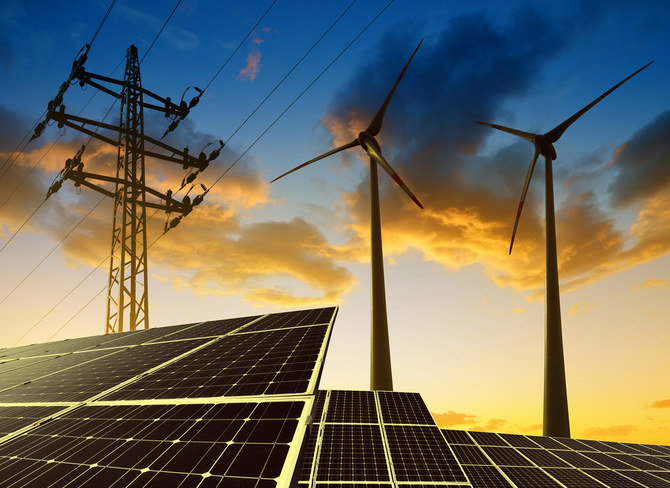
RIYADH: Booming investments in clean energy technology are strengthening the global economy by creating new industrial and employment opportunities, a report has outlined.
According to the International Energy Agency, global investment in the manufacturing of five key clean energy technologies – solar photovoltaic, wind, batteries, electrolyzers, and heat pumps – surged by 70 percent year-on-year in 2023 to $200 billion.
The IEA added that investments in clean technology manufacturing are becoming increasingly significant and are beginning to register in broader macroeconomic data.
According to the report, such investments in 2023 accounted for around 0.7 percent of worldwide investment across all sectors of the economy.
“In growth terms, the contribution is even starker — in 2023, clean technology manufacturing alone accounted for around 4 percent of global GDP (gross domestic product) growth and nearly 10 percent of global investment growth,” said the IEA.
Solar PV meets 2030 targets
The analysis revealed that investments in solar PV manufacturing more than doubled last year to $80 billion, while funding in battery production rose by around 60 percent to $100 billion.
Due to the surge in investments, solar PV module manufacturing capacity today is already in line with what is needed in 2030 based on the IEA’s net zero emissions scenario.
Similarly, for battery cells, if announced projects are included, manufacturing capacity is 90 percent of the way toward meeting net zero demand by the end of this decade, the report highlighted.
“Record output from solar PV and battery plants is propelling clean energy transitions — and the strong investment pipeline in new facilities and factory expansions is set to add further momentum in the years ahead,” said IEA Executive Director Fatih Birol.
He added: ‘While greater investment is still needed for some technologies — and clean energy manufacturing could be spread more widely around the globe — the direction of travel is clear.
“Policymakers have a huge opportunity to design industrial strategies with clean energy transitions at their core.”
The IEA also stated that around 40 percent of investments in clean energy manufacturing in 2023 were in facilities that are due to come online in 2024. For batteries, this share rises to 70 percent.
Battery manufacturing grows
Battery manufacturing also had a record year in 2023, with production totaling more than 800 gigawatt-hours, representing a rise of 45 percent from 2022.
The report highlighted that battery capacity additions also surged, with almost 780 GWh of cell manufacturing capacity added in 2023, around a quarter more than the previous year.
“Globally, battery manufacturing capacity could exceed 9 terawatt-hours by 2030 if all announcements are realized. Battery manufacturing deployment needs in 2030,” added the IEA report.
Similarly, new manufacturing capacity for wind and electrolyzers also grew faster in 2023.
According to the agency, the existing capacity for wind could deliver nearly 50 percent of the needs in 2030, while announced projects could meet a further 12 percent.
Meanwhile, capacity additions for heat pump manufacturing slowed due to stagnation in the majority of leading markets. The report added that the existing capacity could deliver only around one-third of the needs required in 2030.
China dominates clean energy
Clean energy manufacturing is still dominated by a few regions, with China home to 80 percent of the global solar PV module production capacity.
The report highlighted that the manufacturing of battery cells could become less geographically concentrated by the end of this decade if all announced projects are materialized.
After conducting plant-level assessments of more than 750 facilities, the IEA found that China remains the lowest-cost producer of all clean energy technologies.
“Battery, wind and solar PV manufacturing facilities are typically 20 percent to 30 percent more expensive to build in India than in China, and 70 percent to 130 percent more in the US and Europe,” the IEA said.
It added: “However, the vast majority of total production costs for these technologies; 70 percent to 98 percent, is estimated to come from operational costs, which include inputs such as energy, labor and materials — implying that production cost gaps seen today are not immutable and can be influenced by policy.”
Apart from China, the US, and the EU, other countries that heavily invested in clean energy technologies in recent years were India, Japan, and South Korea.
The report also highlighted that similar investments in Africa, Central America, and South America were negligible.
Multiple factors shape investments
The IEA revealed that cost is not the only factor that draws investments in the clean energy technology sector.
According to the think tank, several other factors, including the size of the domestic market, availability of skilled workers, and infrastructure readiness, are other crucial elements that shape the decisions of firms to invest in the sector.
“Policy interventions can therefore raise the attractiveness of investing in a given region without directly subsidizing the costs of manufacturing,” said the IEA.
It added: “Training and certification schemes for workers, compressing project lead times while maintaining environmental standards, enlarging domestic markets and reducing uncertainty with robust, stable climate policies are some key ‘low regret’ measures that can increase incentives to invest, irrespective of the role of direct incentives in industrial strategies.”
The report also underscored the vitality of research and development to increase the growth of clean energy manufacturing globally.
“While private-sector R&D can be stimulated by policies that promote manufacturing investment and experience, direct innovation support is also needed,” said the IEA.
The agency also noted that government initiatives, including R&D grants or loans, project finance, support for rapid prototyping, and promoting startups, will accelerate advancements in clean energy manufacturing.
Dubai Financial Services Authority sees 40% surge in new license registrations, CEO reveals
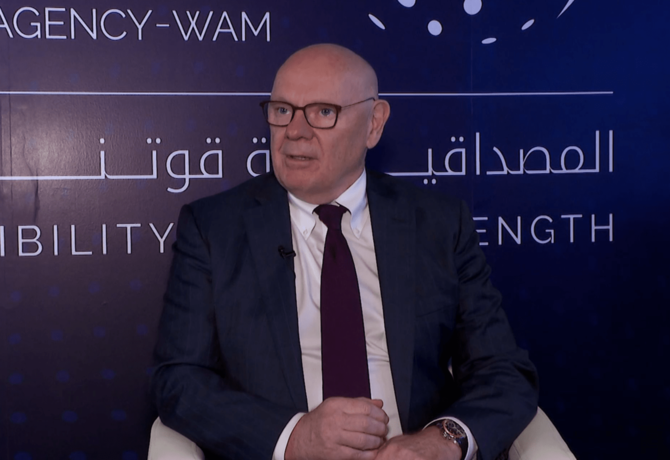
RIYADH: New license registrations through the Dubai Financial Services Authority increased by 40 percent in the first months of this year compared to the same period in 2023.
The organization’s CEO, Ian Johnston, confirmed the issuance growth to the Emirates News Agency on the sidelines of the 2nd edition of the Dubai Financial Technology Summit.
Johnston stated that 2024 is poised to be the most dynamic year yet for new license issuances, building on the momentum achieved in the past two years.
He added that this period will witness an abundance of new licensing activities, encompassing startups in the financial technology sector, as well as major corporations and international banks continuing to converge toward the Dubai International Financial Centre.
DIFC, a hub in the Middle East, Africa, and South Asia region, connects the area’s fast-growing markets with global economies and offers dining, retail, and living amenities, according to its website.
The CEO anticipated receiving over 100 applications from companies, with between 130 and 140 new businesses slated for licensing in the DIFC, reflecting the pace of growth, according to WAM.
He emphasized that the base serves as the primary international financial destination in the region, contributing to Dubai’s strategy to enhance its position as a global financial center in the Middle East.
He stated: “We are not only witnessing an increase in the number of companies we license, but also witnessing the success of these companies in the DIFC, facilitating individuals in conducting their business, as well as facilitating the conclusion of deals.”
Johnston emphasized Nasdaq’s role in Dubai’s global bond and sukuk listing hub, noting it as the world’s largest sustainable sukuk market, with over 60 percent in US dollars tied to environmental, social, and governance criteria, and around 50 percent across all currencies linked to governance and social responsibility.
He noted that Nasdaq Dubai has become the leading venue for listing environmental, social, and governance sukuk, demonstrating the increasing interest in sustainable investments and Nasdaq Dubai’s position as a preferred platform for such issuances.
Johnston anticipated that the DIFC would continue to experience further growth and activity in the current year, owing to Dubai’s established status as a regional financial center, highlighting that the center accommodates over 40,000 professionals, in addition to those working in finance outside the center.
The CEO indicated that Dubai is poised to emerge as one of the top four to five global financial centers in the coming years, stating: “We are already working toward achieving that as soon as possible.”
He stressed the Dubai Financial Services Authority’s goal to promote innovation by backing the fintech sector within regulations. This aligns with companies’ move toward regulatory compliance and proactive adoption of guidelines for stability and sustainable growth.
The authority had announced earlier in January that it had an exceptional growth year in 2023, saying in a press release: “The region’s leading regulator licensed and registered a record-breaking 117 firms during the 12-month period, an increase of 25 percent from the previous year.”
Johnston explained that regarding rules and governance, one of the positive developments occurring now is that financial technology operators are beginning to understand the regulatory process, and the task as regulators is to ensure that they impose directives to protect investors.
DIFC had recorded its highest gross written premiums in its 20-year history, amounting to $2.6 billion in 2023, marking a 23 percent increase from the previous year.
The center also recorded a 20 percent rise in the registration of insurance and reinsurance firms, including the first move of a Guernsey-based captive.
Saudi-Malaysian economic ties strengthen with launch of business council
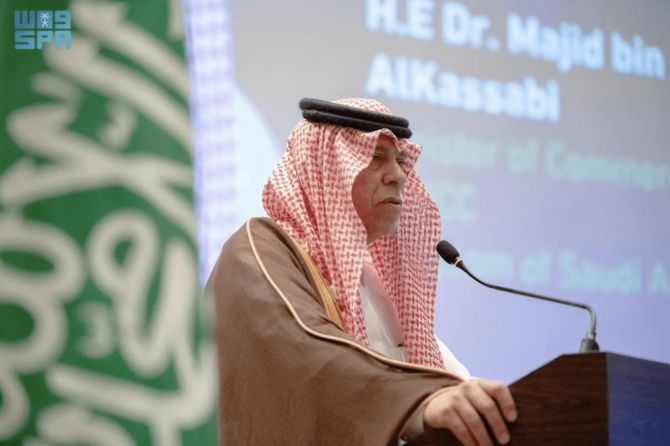
RIYADH: Economic ties between Saudi Arabia and Malaysia are set to soar with the launch of a business council aimed at catalyzing growth and collaboration across various sectors.
The council was inaugurated during the visit of Saudi Minister of Commerce Majed bin Abdullah Al-Qasabi, who led a delegation comprising 44 officials and leaders representing 20 government bodies and 24 private sector entities to the Southeast Asian country.
The minister announced the establishment of the business council, emphasizing its goal of enhancing economic relations between the two countries.
“We inaugurated today with the Minister of Investment, Trade and Industry, Tengku Zafrul Aziz the Saudi-Malaysian Business Council to contribute to strengthening economic and trade relations in the promising sectors in the two brotherly countries,” Al-Qasabi said in a post on his X account on May 6.
The Saudi minister further held a roundtable meeting with Aziz, attended by Sulaiman Mahbob, chairman of the Malaysian Investment Development Authority, and Dato Seri Reezal, chairman of the Malaysia External Trade Development Corp., along with Shaharul Sadri Alwi, director general of the Department of Standards Malaysia.
Al-Qasabi pointed out that the talks with Malaysian officials revolved around enhancing partnerships within the business sectors of both nations.
Concluding his visit to the Southeast Asian country, the commerce minister mentioned that he had also held meetings with Ewon Benedick, minister of entrepreneurship development; Mohamad Sabu, minister of agriculture and food industry; and Alexander Nanta Linggi, minister of works.
“We discussed cooperation in the areas of training, knowledge transfer, innovation, and sustainability, while also reviewing Malaysia’s experience in supporting small and medium-sized projects,” Al-Qasabi said.
During the meetings, efforts to encourage exports and enhance the capabilities of Saudi and Malaysian companies to access global markets were discussed, the Saudi Press Agency reported.
It added that collaboration in capacity building in innovation, emerging technologies, research programs, and e-commerce was emphasized.
Al-Qasabi affirmed that Saudi Arabia’s Vision 2030, launched by Crown Prince Mohammed bin Salman, has brought about significant transformations in the Saudi economy since its announcement in 2016.
He noted the close trade relations between Saudi Arabia and Malaysia, highlighting significant opportunities for expansion and diversification. The minister emphasized Saudi Arabia’s efforts to become a global hub for trade and logistics services.
In conjunction with the Saudi delegation’s visit to Malaysia, representatives from the Federation of Saudi Chambers, led by Secretary-General Waleed Al-Orainan, participated in the meeting aimed at exploring investment opportunities in both countries.
The meeting concluded with the signing of significant partnership and investment agreements between the two sides.
Al-Orainan and the President of the National Chamber of Commerce of Malaysia, Tan Datu, signed an agreement to enhance economic cooperation.
Moreover, private sector companies from both countries held bilateral meetings and signed trade and investment partnership agreements in multiple sectors.
PIF’s Egyptian investment arm set to acquire shares in education-focused Social Impact Capital

RIYADH: Egypt’s Social Impact Capital is set to receive a significant financial boost as it announced a conditional agreement with the Saudi Egyptian Investment Co.
Under the terms of the deal, SEIC will subscribe for new shares in SIC, the principal shareholder of CIRA Education, which is listed on the Egyptian Stock Exchange.
This financial arrangement is designed to facilitate SIC’s acquisition of additional shares in CIRA, potentially increasing SIC’s total shareholding to between 75 percent and 100 percent at a price of 14 Egyptian pounds ($0.29) per share.
This move aims to delist CIRA from the Egyptian exchange and transform it into a major regional player in the education sector.
SEIC, wholly owned by the Saudi Public Investment Fund, will play a crucial role in enhancing CIRA’s market position. As one of the largest fully integrated education service providers in Egypt’s private sector, CIRA stands to benefit significantly from this partnership.
The completion of this conditional agreement is contingent upon successful due diligence, securing applicable regulatory approvals, and the execution of definitive agreements.
Following these steps, the SIC-SEIC consortium plans to extend a mandatory tender offer to CIRA’s other shareholders on the Egyptian stock exchange in line with existing laws and regulations.
CIRA’s initial public offering was in 2018 at a market value of 1.2 billion Egyptian pounds.
According to several reports, the company’s IPO saw selling shareholders SIC alongside other minority reserve holders offer of 207.26 million shares, or 37.8 percent of CIRA, to institutional and retail investors at a price of 6 Egyptian pounds per share.
Moreover, SEIC has been a major investor in Egyptian companies.
In 2023, the investment entity acquired a 25.01 percent stake in state-owned fintech giant e-Finance.
This comes as SEIC acquired an initial 25 percent stake in the fintech company in 2022, making it e-Finance’s largest shareholder.
Also in 2022, SEIC acquired minority stakes in three other Egyptian state-owned companies with a total investment of $1.3 billion.
The three other companies are Abu Qir Fertilisers and Chemical Industries, Misr Fertilisers Production Co., and Alexandria Container and Cargo Handling.
Oil Updates – prices climb after Israel strikes Gaza, truce talks continue
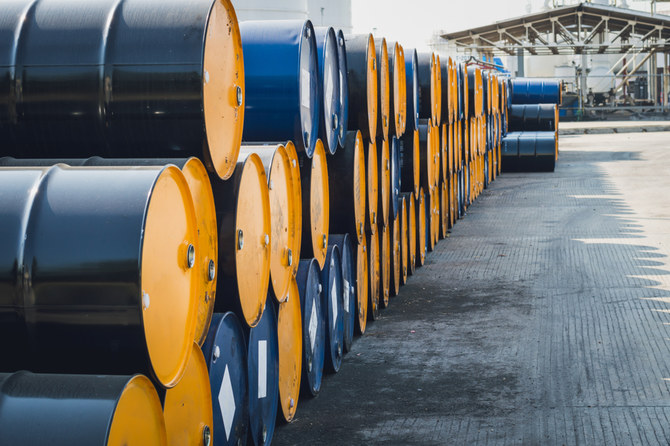
SINGAPORE: Oil prices edged higher on Tuesday after Israel struck Rafah in Gaza, while negotiations for a ceasefire with Hamas continued without resolution, according to Reuters.
Brent crude futures were up 9 cents, or 0.11 percent, at $83.42 per barrel at 9:35 a.m. Saudi time, while US West Texas Intermediate crude futures rose 7 cents, or 0.09 percent, to $78.55 a barrel.
“Oil prices opened up this morning, with some roadblocks in the ceasefire talks between Israel and Hamas leading market participants to price for geopolitical tensions to potentially drag for longer,” said Yeap Jun Rong, market strategist at IG.
Market participants will be looking ahead to upcoming US crude inventories data releases, Yeap added.
US crude oil and product stockpiles were expected to have fallen last week, a preliminary Reuters poll showed on Monday. The crude inventories could have on average fallen by about 1.2 million barrels in the week to May 3, based on analyst forecasts.
During the session, a stronger dollar capped gains in oil futures as it makes crude more expensive for traders holding other currencies. The dollar index, which measures the greenback against six major peers, was last up at 105.25.
Oil prices had settled higher on Monday, partially reversing last week’s declines. Both contracts had posted the steepest weekly losses in three months as the market focused on weak US jobs data and the possible timing of a Federal Reserve interest rate cut.
Palestinian militant group Hamas on Monday agreed to a Gaza ceasefire proposal from mediators, but Israel said the terms did not meet its demands and pressed ahead with strikes in Rafah while planning to continue negotiations on a deal.
Israeli forces struck Rafah on Gaza’s southern edge from the air and ground and ordered residents to leave parts of the city, which has been a refuge for more than 1 million displaced Palestinians.
The absence of a settlement between the parties in the now seven-month long conflict has supported oil prices, as investors worry regional escalation of the war will disrupt Middle Eastern crude supplies.
Saudi Arabia’s move to raise the official selling prices for its crude sold to Asia, Northwest Europe and the Mediterranean in June also supported prices, signalling expectations of strong demand this summer.
The world’s top exporter hiked its flagship Arab Light crude oil price to Asia to $2.90 a barrel above the Oman/Dubai average in June, the highest since January and at the upper end of traders’ expectations in a Reuters survey.



